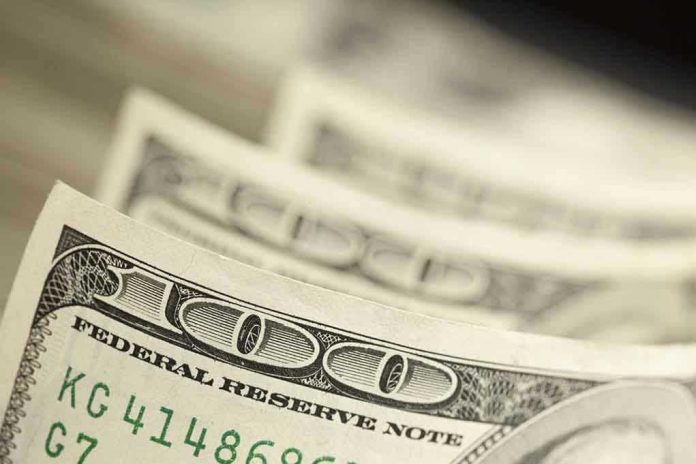
With inflation still biting savers and retirees, the White House’s hands-on search for a new Fed chair could reset monetary policy—and the stakes for Main Street are enormous.
Story Snapshot
- Treasury Secretary Scott Bessent is personally interviewing candidates and will send finalists to President Trump, with a decision expected this fall.
- President Trump publicly ruled out appointing Bessent as Fed chair, clarifying the field.
- Top contenders include sitting Fed leaders Michelle Bowman, Philip Jefferson, and Lorie Logan, plus market-oriented conservatives like Kevin Warsh and James Bullard.
- The administration signals no urgency, while separately moving a Fed Board nomination to keep governance steady.
What’s happening: A streamlined, executive-led Fed chair search
Bloomberg-sourced reporting relayed by a market wire indicates Treasury Secretary Scott Bessent is organizing and personally conducting interviews for the next Federal Reserve chair, producing a shortlist that President Trump will meet before a fall decision. The approach centralizes gatekeeping in Treasury rather than a diffuse White House process, offering unusual transparency on timing: interviews now, finalists to the President, decision in the fall. The administration simultaneously communicates there is “no urgency” to announce a pick.
Reporting names current Fed leaders—Michelle Bowman, Philip Jefferson, and Lorie Logan—as serious contenders, joined by outside and former officials including Kevin Hassett, Christopher Waller, Marc Sumerlin, Kevin Warsh, and James Bullard. This slate spans continuity candidates with confirmability and market-facing conservatives associated in commentary with comparatively easier policy preferences. Markets will scrutinize each name for clues about the next chair’s reaction function, weighing inflation risks against growth and credit conditions.
Why it matters for conservatives: Inflation, independence, and accountability
President Trump has pushed Chair Jerome Powell all year to cut rates without success, intensifying the search context. A chair inclined to respond more flexibly as inflation cools could ease pressure on families facing elevated borrowing costs for homes, cars, and small business credit. Conversely, a pure continuity pick would aim to preserve the Fed’s current inflation-fighting framework. Either path implicates Fed independence: the Senate’s confirmation check remains a constraint that prioritizes credible, explainable policy over political theatrics.
The process also runs alongside a separate governance move: the White House advanced Stephen Miran’s nomination to the Fed Board to fill a vacancy created by Adriana Kugler’s planned exit. Maintaining a full Board can stabilize policy during leadership transition. The administration’s “no urgency” message suggests an orderly cadence designed to limit market volatility while signaling seriousness about direction. That balance—discipline without drift—matters for retirees’ savings and businesses planning capital spending.
The field: Continuity versus recalibration candidates
Sitting officials such as Vice Chair Philip Jefferson and Vice Chair for Supervision Michelle Bowman offer institutional continuity, potentially smoother Senate confirmation, and a steady hand for markets. Dallas Fed President Lorie Logan brings markets and operations expertise. Former and outside figures including Kevin Warsh and James Bullard have well-known policy identities that analysts often read as more open to easing if disinflation continues, while Christopher Waller’s current governor role bridges continuity with a pragmatic data-driven stance. Each profile carries distinct confirmation dynamics and policy signaling.
Selection will shape how the Fed balances its dual mandate over the next four years. A recalibration toward looser policy could lower borrowing costs sooner, benefiting rate-sensitive sectors, but would require clear communication to protect inflation credibility. A continuity pick would reinforce the inflation target’s integrity and reduce uncertainty, but could prolong higher-for-longer rates if the committee prioritizes price stability over growth. Either way, transparency about criteria—credibility, rule of law, and data dependence—will anchor public trust.
Process guardrails: Trump’s clarification and Bessent’s role
President Trump explicitly ruled out appointing Scott Bessent as chair, removing speculation and reinforcing Bessent’s role as process steward rather than contender. Bessent’s personal interviews narrow the field to candidates aligned with the administration’s policy aims while preserving the President’s final say after face-to-face meetings. This two-tier vetting—technical screening, then executive interviews—mirrors best practices seen in prior transitions while providing an orderly path to a fall decision that markets can price gradually instead of reacting to surprise.
Key limitations remain. Public reporting identifies names, timeline, and roles, but not President Trump’s ranked preferences among finalists. The “no urgency” posture could shift if economic data change or Senate signals alter confirmability calculus. Still, the structure is clear: interviews underway, shortlist forthcoming, finalists to the Oval Office, and a fall announcement that will set the course for rates, savings, and credit across the economy—issues that hit households, small businesses, and local communities first.
Sources:
Trump rules Bessent out as Fed chair
Trump admin interviews top Fed chair contenders ahead of 2025 decision














